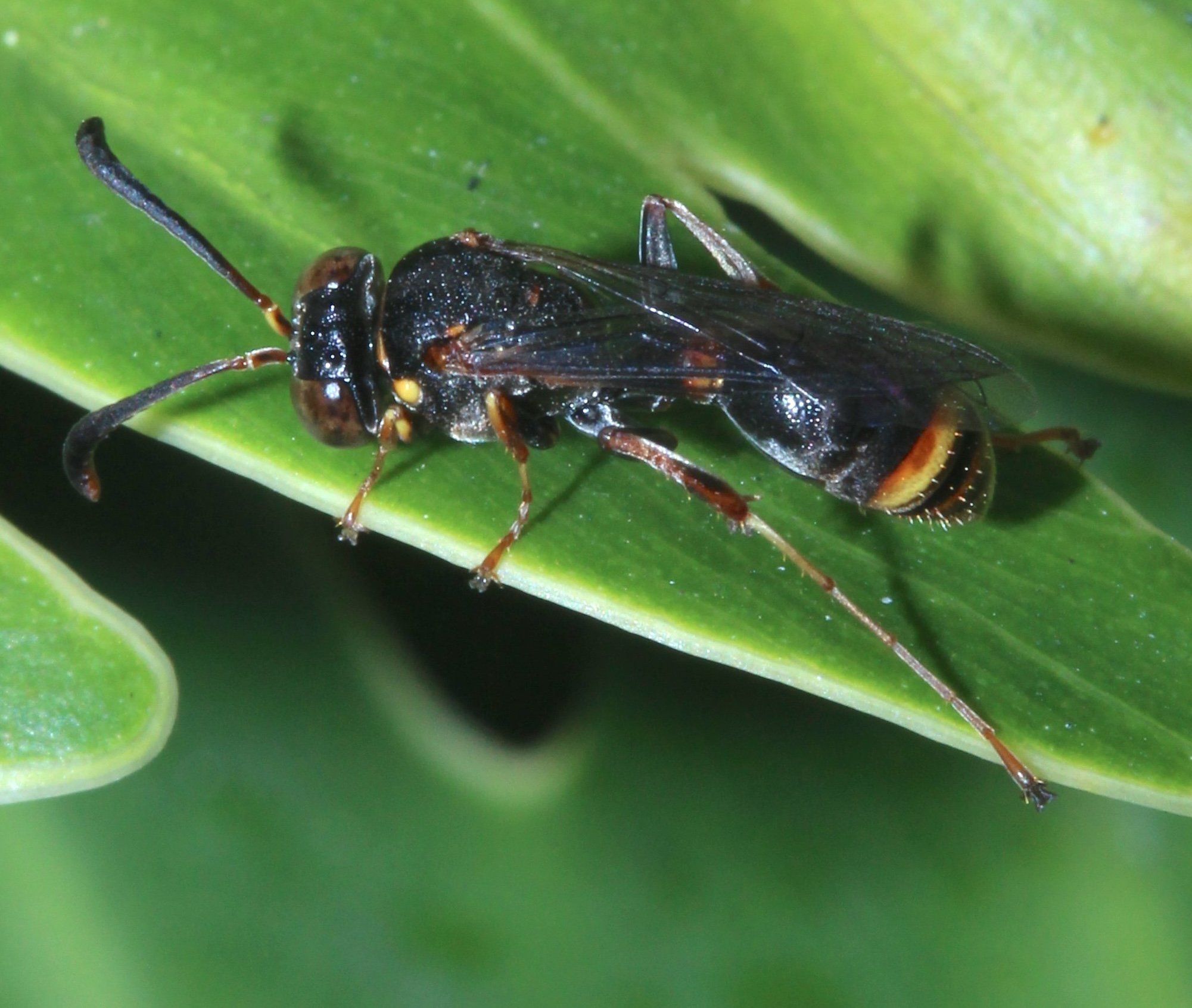Ammatomus (Bembicini)

Workbook
This genus is widely distributed, including many African countries as well as China, south-east Asia and Australia, yet it is quite a small genus. There are only about 30 species described globally, and just 3 in Australia.
Ammatomus in Australia are rather rare. They are seldom collected and little studied. The three Australian species were each described more than a century ago, and I can find nothing published on their taxonomy since then. Even museum specimens appear to be scarce, to say the least! There are no listings on the websites for Museums Victoria, Queensland Museum, nor the centralised Atlas of Living Australia (ALA). Some studies were undertaken in 1980s, but into the nesting behaviour and larval development. Ammatomus icarioides, like most gorytines, digs burrows in the ground and stocks the nest with hemipterans (typically Fulgoroidea, ‘planthoppers’) (Hook, 1981; Evans, 1983).
Again, iNaturalist is making a significant contribution to what we know about this genus in Australia. There are currently 15 recognised sightings, and I hope to find a few more as I trawl the unidentified crabronids. I also hope to be able to identify at least some of these to species level. Hence the summary below.
Cover image: photo courtesy of Natasha Taylor (CC-BY-NC), iNaturalist sighting https://inaturalist.ala.org.au/observations/100729199
Genus-level identification
The shape of the antennae is perhaps the easiest way to distinguish these wasps from all other Australian Bembicini. That, and the extremely long hind tarsi. The following links to higher-level notes pages list the genus-level characteristics in more detail:
Species-level identification
With just three known species, I thought this might be simple. Not so. The only published descriptions are based on females, and for Ammatomus austrinus on just a single insect. Therefore the critera must be applied with caution. A study of Ammatomus species elsewhere, however, does suggest that the morphological differences between the sexes is minimal (Schmid-Egger, 2019). In males, TI is often longer and the colour patterning of the gaster variable. Only time will tell what the situation is for males of the Australian species. With luck, iNaturalist sightings will turn up some mating pairs!
Bits & Pieces
The original descriptions for each species, along with any other relevant resources I can collect.
References
Bingham, C.T. 1912. South African and Australian Aculeate Hymenoptera in the Oxford Museum. Transactions of the Entomological Society of London 1912: 375-383
Evans, H.E. 1983. The larva of Ammatomus icarioides (Turner)(Hymenoptera: Sphecidae, Nyssoninae). Pan-Pacific Entomologist 59(1-4): 52-54
Handlirsch, A. 1889. Monographie der mit Nysson und Bembex verwandten Grabwespen. iii. Sitzungsberichte der Akademie der Wissenschaften in Wien. Mathematisch-Naturwissenschaftliche Klasse 97: 316-565
Hook, A. 1981. Nesting biology of Tanyoprymnus moneduloides and Ammatomus icarioides. Annals of the Entomological Society of America 74(4); 409-11
Schmid-Egger, C. 2019. Review of the genus Ammatomus A. Costa, 1859 (Hymenoptera, Crabronidae) from the Palearctic region with description of four new species. Linzer biologische Beiträge. 51(1): 437-457
Smith, F. 1868. Descriptions of aculeate Hymenoptera from Australia. Transactions of the Entomological Society of London 1868: 231-258
Turner, R.E. 1908. Notes on the Australian fossorial wasps of the family Sphegidae, with descriptions of new species. Proceedings of the Zoological Society of London 1908: 457-535 pl. xxvi
Turner, R.E. 1915. Notes on fossorial Hymenoptera. XV. New Australian Crabronidae. Annals and Magazine of Natural History 8 15: 62-96
This is a workbook page … a part of our website where we record the observations and references used in making species identifications. The notes will not necessarily be complete. They are a record for our own use, but we are happy to share this information with others.






